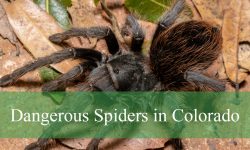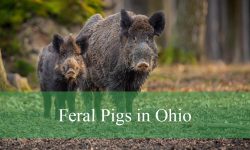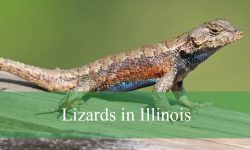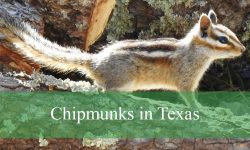California’s diverse coastline, expansive wetlands, and inland lakes make it one of the best places in North America to observe a wide variety of gull species. Standing by the surf at a beach, strolling around a marina, or watching birds gather in a parking lot, people can often encounter multiple types of gulls in California throughout the year. From the iconic Western Gull to rare Arctic vagrants, these birds bring surprising diversity to the Golden State’s skies.
Gulls in California are more than just familiar coastal sights—they are highly adaptable, intelligent birds with subtle differences in size, plumage, and behavior. Some species stay year-round, while others arrive during migration or winter months, traveling thousands of miles to reach California’s hospitable shores. While many gulls look alike at first glance, careful observation reveals unique features that make each species distinctive.
This guide highlights 21 types of gulls in California, complete with pictures and identification tips to help sharpen your birding skills. Exploring the fascinating world of these coastal birds adds a deeper appreciation for California’s rich and dynamic birdlife.
Common and Regular Gulls in California
These are the species most frequently seen along the coast, inland lakes, and urban areas.
Western Gull (Larus occidentalis)
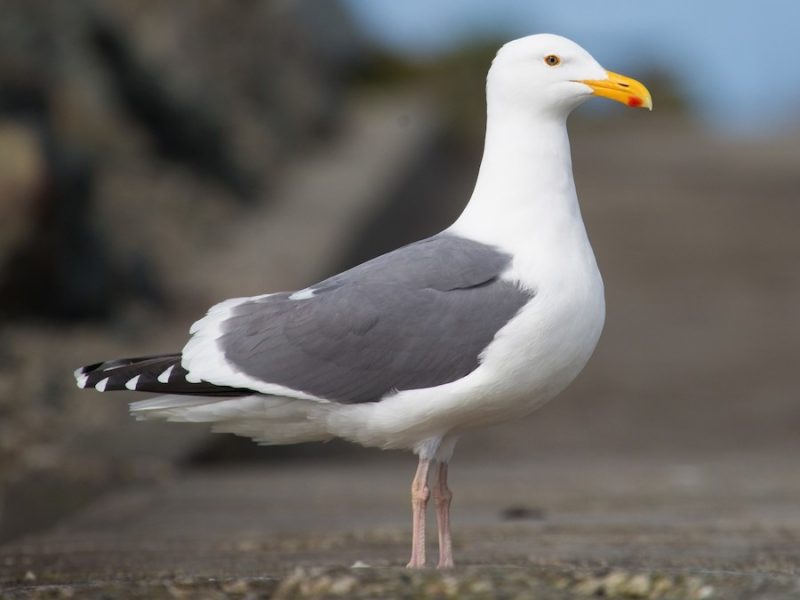
The Western Gull is a large, robust gull native to the Pacific Coast, known for its white head, dark gray back, and pink legs. It typically measures around 22 to 27 inches in length, with a wingspan reaching up to 5 feet. Adults have a thick yellow bill with a red spot on the lower mandible, which plays a role in chick feeding behavior. These gulls are among the most recognizable seabirds along the California coastline.
In California, the Western Gull is found year-round, particularly along the coast from Mendocino County down to Baja California. It prefers rocky shorelines, harbors, piers, and islands for nesting. This gull is highly territorial during the breeding season and often nests in large colonies on offshore islands, such as the Channel Islands and Farallon Islands.
Western Gulls are opportunistic feeders, consuming a varied diet of fish, marine invertebrates, garbage, and even the eggs or chicks of other seabirds. They are known for their bold behavior around humans, often scavenging in parking lots and piers. A fun fact: Western Gulls are one of the few gull species that rarely stray far from the ocean, making them true coastal specialists.
California Gull (Larus californicus)
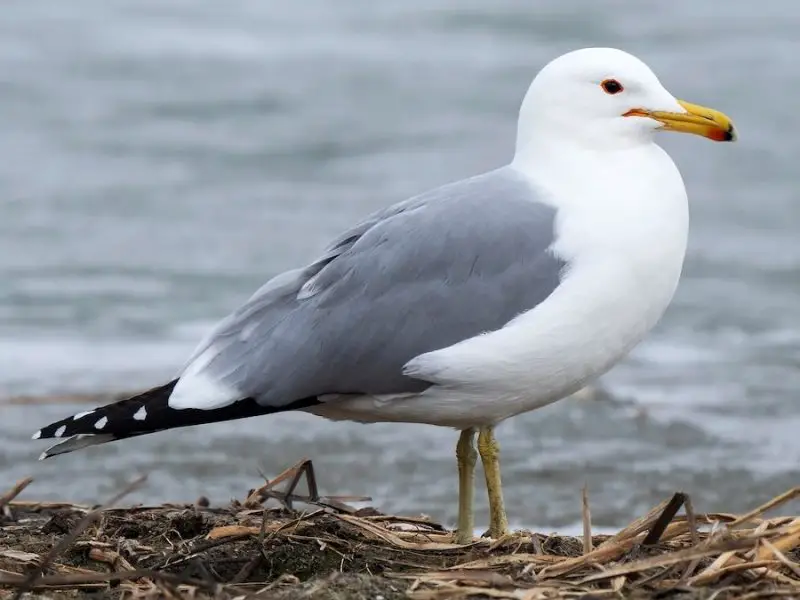
The California Gull is a medium-sized gull with a white head, gray back, black wingtips with white spots, and greenish-yellow legs. It grows to about 20 to 23 inches in length with a wingspan of up to 4.5 feet. This species can be identified by its black and red spot on the bill, which sets it apart from other similarly sized gulls.
This gull breeds inland at large lake colonies, particularly in Mono Lake and the Great Basin area. In California, it is widespread during the nonbreeding season, commonly seen along the coastline, farmlands, garbage dumps, and even urban areas. While it winters throughout the state, it tends to be especially abundant around the Central Valley and the Pacific Coast during colder months.
California Gulls feed on insects, fish, invertebrates, garbage, and occasionally small animals. They have even been observed following plows in agricultural fields to feast on unearthed insects. A quirky historical note: this gull is revered in Utah, where it famously helped early Mormon settlers by eating crop-destroying crickets, leading to the erection of a monument in Salt Lake City.
Ring-billed Gull (Larus delawarensis)

The Ring-billed Gull is a medium-sized gull easily recognized by the black ring around its yellow bill. Adults have white heads, gray backs, and yellow legs. This species measures about 17 to 21 inches in length and has a wingspan of approximately 4 feet. In winter, its head often becomes streaked with gray, adding to its seasonal variability in appearance.
In California, the Ring-billed Gull is a very common winter visitor, especially in inland areas such as the Central Valley and near large bodies of water like lakes, reservoirs, and urban ponds. It is also frequently seen in city environments, such as parking lots and sports fields, where it takes advantage of human activity and food waste.
Ring-billed Gulls eat a wide variety of foods, including fish, insects, earthworms, grain, and garbage. They are skilled foragers and often congregate in large flocks near human settlements. A fun fact: these gulls are so well-adapted to urban environments that they have learned to time their visits to schools and fast-food outlets around lunchtime.
Heermann’s Gull (Larus heermanni)
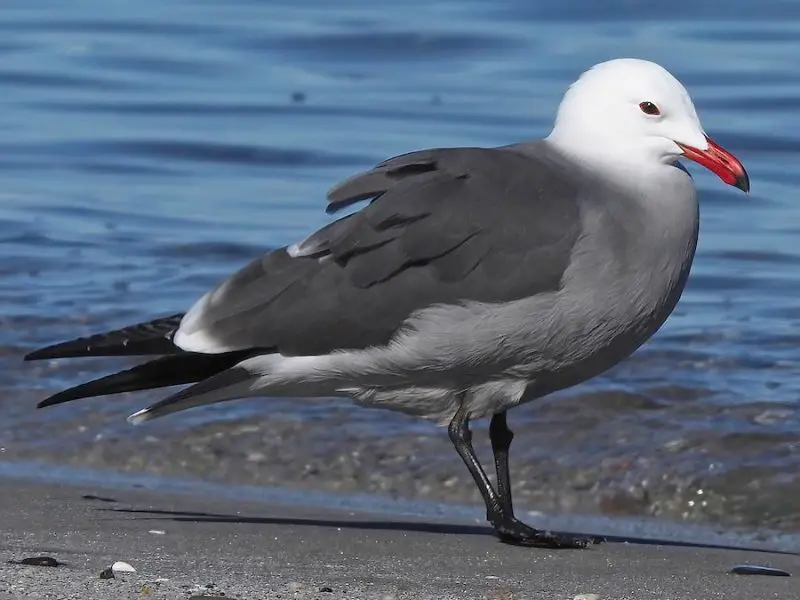
Heermann’s Gull is a striking and distinctive species, with a slate-gray body, white head (in breeding season), black-tipped wings, and a bright red bill with a black tip. This medium-sized gull measures around 18 to 21 inches in length, with a wingspan close to 4 feet. Juveniles are dark brown and gradually acquire the adult’s bold coloration over several years.
Heermann’s Gulls are primarily found along the Pacific Coast, especially in central and southern California during summer and fall. They breed mainly on Isla Rasa in the Gulf of California and migrate northward after the breeding season. Along California’s coast, they are commonly seen near beaches, jetties, and piers, often mingling with other gulls and seabirds.
Their diet consists largely of small fish, squid, and scraps from fishing boats. They are aggressive feeders and often steal food from other birds such as pelicans or terns. A fun fact: Heermann’s Gull is considered one of the most beautiful gull species in North America, and due to its limited breeding range, it is also one of the most conservation-sensitive.
Glaucous-winged Gull (Larus glaucescens)
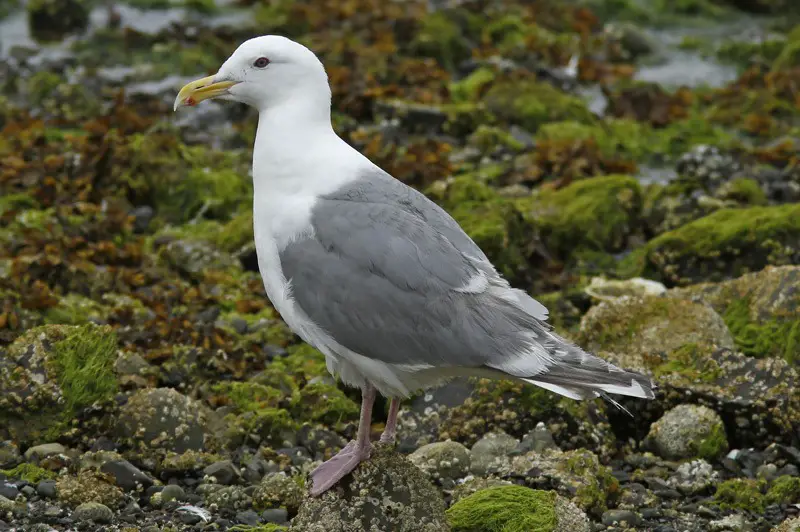
The Glaucous-winged Gull is a large, heavy-bodied gull with pale gray wings and back that blend in with its wingtips, distinguishing it from other gulls that have black wing markings. Adults also have a white head and body, pink legs, and a yellow bill with a red spot. This species typically measures between 20 to 26 inches long, with a wingspan up to 5 feet.
In California, the Glaucous-winged Gull is most commonly found in the northern part of the state, particularly during the winter months. It frequents coastal areas, bays, and harbors, often roosting on beaches or docks. This gull often overlaps with Western Gulls, and the two species frequently hybridize, especially around the San Francisco Bay Area.
Glaucous-winged Gulls have a varied diet that includes fish, invertebrates, garbage, carrion, and other birds’ eggs. They are generalists and can adapt their feeding behavior to different environments. A fun fact: hybrids between Glaucous-winged and Western Gulls are so common in some areas that birders have coined the term “Olympic Gull” to describe them.
Herring Gull (Larus argentatus)

The Herring Gull is a large gull with a classic appearance: white head and underparts, gray back, pink legs, and black wingtips marked with white spots. Adults also have a hefty yellow bill with a red spot. Measuring between 22 to 26 inches long with a wingspan of about 5.5 feet, it’s one of the largest gulls found in North America and is often confused with the similar-looking Western Gull.
In California, the Herring Gull is a winter visitor, most commonly spotted in the northern regions of the state, especially around San Francisco Bay and Humboldt Bay. However, it can appear sporadically throughout the state during migration or along major water bodies. It’s more likely to be seen around harbors, landfills, and beaches.
These gulls are omnivorous scavengers, feeding on fish, mollusks, garbage, and carrion. Their opportunistic nature makes them frequent visitors to urban areas and fishing ports. A fun fact: Herring Gulls have complex social behaviors and have been observed using tools, such as dropping hard-shelled prey from heights to crack them open.
Bonaparte’s Gull (Chroicocephalus philadelphia)

Bonaparte’s Gull is a small and graceful gull, measuring about 11 to 13 inches in length with a wingspan of around 3 feet. In breeding plumage, it has a sleek black head, white underparts, and pale gray wings with distinct black tips. Outside of breeding season, its head turns white with a small dark spot behind the eye, making it appear delicate and tern-like.
This gull migrates through California in both spring and fall and spends the winter in coastal waters, estuaries, and bays. It is most frequently observed along the coast, from San Diego up to the San Francisco Bay, and occasionally inland on lakes and reservoirs during migration.
Bonaparte’s Gulls feed on small fish, insects, and aquatic invertebrates. They often dip and skim over the water’s surface in a swallow-like manner. A fun fact: unlike most gulls, they frequently nest in trees, building their nests in coniferous forests near lakes in Canada and Alaska.
Mew Gull (Larus canus)
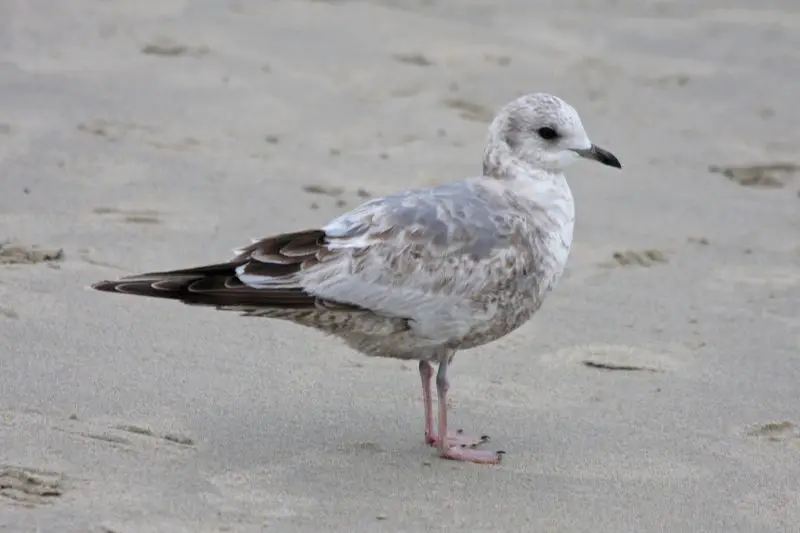
The Mew Gull is a small, dainty gull with a rounded head, yellow bill without any markings, and greenish-yellow legs. Adults have a light gray back, white body, and black wingtips with distinctive white “windows.” They range in size from 16 to 17 inches long with a wingspan of about 3.5 feet, and their gentle, dove-like call is a useful clue for identification.
In California, Mew Gulls are regular winter visitors along the coast, especially in Northern and Central California. They are occasionally seen inland as well, particularly around reservoirs and large lakes. They often gather in mixed flocks with larger gulls but stand out due to their smaller size and sleeker build.
Their diet includes fish, marine invertebrates, earthworms, insects, and human scraps. They forage by walking on shorelines or wading in shallow waters. A fun fact: the Mew Gull is one of the few gull species that nests in both Europe and North America, known in Eurasia as the Common Gull.
Laughing Gull (Leucophaeus atricilla)
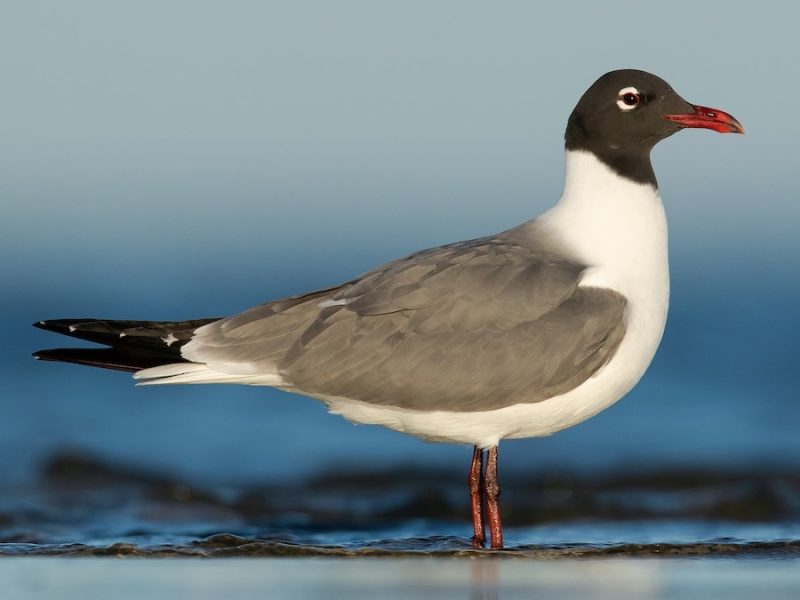
The Laughing Gull is a medium-sized gull with a striking summer appearance: a black head, white eye arcs, dark gray back, and reddish bill. In winter, the black head fades to white, and its head becomes smudged with gray. It measures around 15 to 18 inches long and has a wingspan of approximately 3.5 to 4 feet.
Although mostly an eastern species, Laughing Gulls occasionally appear along the Southern California coast, particularly during summer and fall. Rare individuals are seen around beaches, lagoons, or estuaries, often standing out among the local gulls due to their unique head and call.
Laughing Gulls feed on fish, insects, crustaceans, and scraps, often scavenging near human activity or foraging by dipping over the surf. They are named for their distinctive, laughing-like call, which can be heard when they gather in flocks. A fun fact: Laughing Gulls often steal food from Brown Pelicans by grabbing fish directly from their pouches.
Franklin’s Gull (Leucophaeus pipixcan)
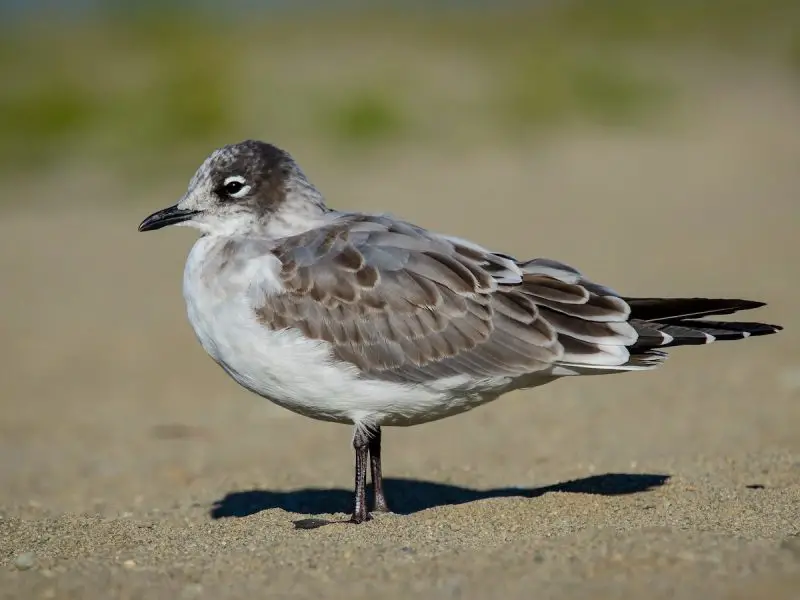
Franklin’s Gull is a small, elegant gull with a black hood during the breeding season, dark gray back, and bright red bill. In nonbreeding plumage, the hood recedes to a smudgy spot behind the eye. It measures around 12 to 14 inches long, with a wingspan of about 3 feet. This species has a buoyant flight and often flocks in large numbers during migration.
Franklin’s Gull is primarily a migrant in California, passing through in spring and fall. It’s more frequently observed inland, particularly in the Central Valley and near wetlands. Though it is not a regular coastal breeder or resident, it may appear along the coast in small numbers during migration or winter.
Its diet consists of insects, earthworms, aquatic invertebrates, and occasional small fish. This gull is known to follow agricultural machinery to feed on disturbed prey. A fun fact: Franklin’s Gulls undertake long-distance migrations between breeding grounds in Canada and the northern U.S. and wintering areas as far south as Chile and Argentina.
Black-headed Gull (Chroicocephalus ridibundus)
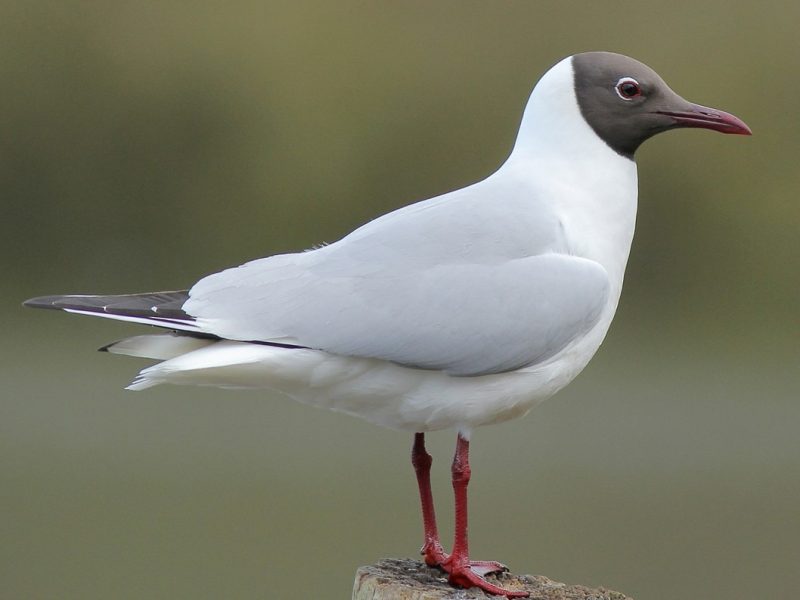
The Black-headed Gull is a rare but regular winter visitor to California, originating from Eurasia. In breeding plumage, it sports a chocolate-brown hood (not truly black), red legs, and a red bill. In winter, the head becomes white with a dark ear spot. It is slightly larger than Bonaparte’s Gull, measuring about 13 to 15 inches long with a wingspan of nearly 3.5 feet.
This gull is most often seen in Northern California, particularly around large wetlands and coastal lagoons during the winter months. Locations like San Francisco Bay and Humboldt Bay have hosted sightings over the years. Because it is rare, birders often seek it out when one is reported.
The Black-headed Gull feeds on small invertebrates, fish, and insects, and it is quite agile in flight, sometimes catching prey midair. A fun fact: despite its name, its head is not black even in summer, and it shares a close evolutionary relationship with Bonaparte’s Gull, which it often resembles in posture and feeding behavior.
Uncommon or Rare Gulls Seen in California
These species are considered rare, but birders occasionally report them during migration or winter.
Glaucous Gull (Larus hyperboreus)

The Glaucous Gull is one of the largest gull species in the world, easily recognized by its very pale plumage and large size. Adults are mostly white with a soft gray back and wingtips that lack the black markings typical of other gulls. Juveniles are overall pale buff or whitish, adding to their ghostly appearance. This massive gull measures up to 27 inches in length with a wingspan that can exceed 5.5 feet.
In California, the Glaucous Gull is a rare winter visitor, most commonly seen in Northern California. Sightings are typically reported from coastal locations such as Humboldt Bay, Bodega Bay, or the northern shores of San Francisco Bay. It may also occasionally show up at inland landfills or large lakes where gull flocks congregate.
This species primarily feeds on fish, carrion, and discarded human food. It also scavenges from other seabirds and is a top predator in some Arctic regions. A fun fact: Glaucous Gulls breed in the high Arctic, and their presence in California signals a significant migration from their frigid breeding grounds.
Iceland Gull (Larus glaucoides)

The Iceland Gull is a medium-sized gull with a delicate build and soft appearance. Adults have a pale gray back, white underparts, and light wingtips that lack the bold black markings seen in most other gulls. Juveniles are pale brown with an overall frosty look. It typically measures 20 to 24 inches in length with a wingspan of around 4.5 feet.
Although rare, the Iceland Gull is an annual winter visitor to California, especially in the northern and central parts of the state. It is often observed around San Francisco Bay, Monterey Bay, and other large bodies of water where gulls gather during the colder months. Birders often find it mixed in with flocks of more common gulls.
Iceland Gulls feed on fish, marine invertebrates, and refuse. They are agile fliers and can be seen foraging at sea or near shorelines. A fun fact: despite its name, the Iceland Gull breeds in Greenland and Arctic Canada, not Iceland, and its winter range occasionally extends all the way to California.
Thayer’s Gull (Larus glaucoides thayeri)

Thayer’s Gull is now considered a subspecies of the Iceland Gull but is still often referred to as a distinct type due to its slightly darker plumage and more robust build. Adults have a medium-gray back and wings with pale black wingtips, while juveniles are brownish with a patterned appearance. It is intermediate in size, typically measuring 21 to 24 inches in length.
This gull is a regular winter visitor to California, especially along the coast in Northern and Central California. Places like San Francisco Bay, Point Reyes, and Monterey often host Thayer’s Gulls among large winter gull flocks. It prefers coastal beaches, piers, estuaries, and nearby landfills.
Thayer’s Gulls feed on fish, invertebrates, and refuse. They are known for their subtle plumage, which can make identification challenging, especially when mixed with other gulls. A fun fact: Thayer’s Gull was named after ornithologist John Eliot Thayer and was once a subject of considerable taxonomic debate due to its overlap in appearance with similar gulls.
Slaty-backed Gull (Larus schistisagus)
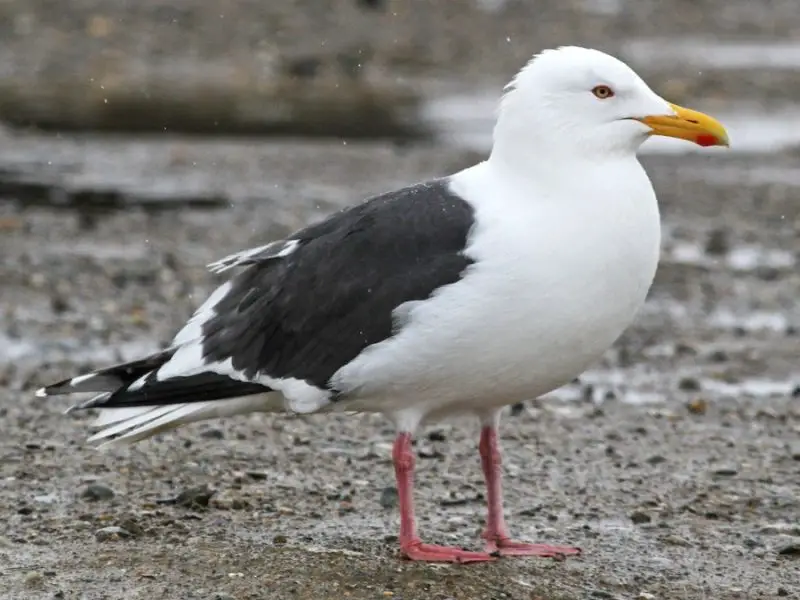
The Slaty-backed Gull is a large, rare gull with a striking appearance. Adults have a dark slate-gray back and wings, white underparts, pink legs, and thick yellow bills with a red spot. A key identification feature is the bold white “string of pearls” pattern on the wingtips. It measures 22 to 27 inches long with a wingspan close to 5 feet.
Native to northeastern Asia, the Slaty-backed Gull is a rare but increasingly reported visitor in California, especially in Central and Southern coastal regions. Sightings are typically from places like Ventura, Los Angeles, and San Diego harbors, often in winter when vagrants from Asia show up.
Its diet includes fish, garbage, and carrion, much like other large gulls. It is aggressive when feeding and often dominates smaller species. A fun fact: the Slaty-backed Gull is one of the few Asian gulls regularly seen in North America, and its presence in California is prized by birders due to its rarity and distinct appearance.
Lesser Black-backed Gull (Larus fuscus)
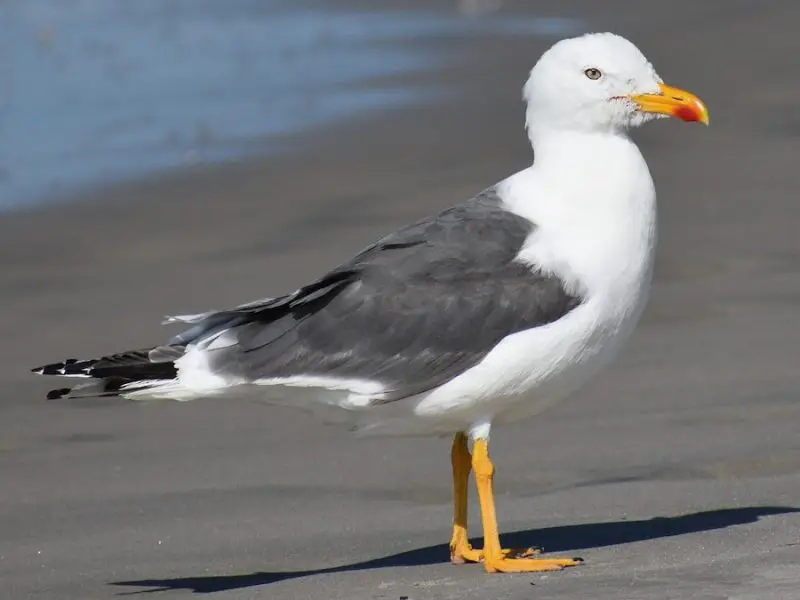
The Lesser Black-backed Gull is a medium to large gull, characterized by its dark gray to almost black back and wings, yellow legs, and clean white underparts. Adults have a sharp yellow bill with a red spot and pale eyes. In flight, it shows a distinctive wing pattern with black wingtips and white spots. It is slightly smaller and more slender than the Western Gull, measuring around 20–24 inches in length.
In California, the Lesser Black-backed Gull is a rare but increasingly reported visitor. Scattered sightings have been made along the coast as well as at inland reservoirs and landfills, particularly during the winter months. San Diego, Los Angeles, and San Francisco Bay areas are among the places where this species has been observed.
This gull feeds on fish, invertebrates, and human refuse, and often associates with large gull flocks. It is native to Europe and breeds across northern Eurasia, so its growing presence in North America, including California, is considered part of an ongoing range expansion. A fun fact: some individuals of this species have been tracked flying thousands of miles across the Atlantic during migration.
Greater Black-backed Gull (Larus marinus)

The Greater Black-backed Gull is the largest gull in the world, towering over most other gull species with a length of up to 30 inches and a wingspan exceeding 5.5 feet. It has a striking black back, massive yellow bill, and pink legs, giving it a powerful and imposing appearance. Its sheer size and dominance make it easy to identify when seen.
This species is very rare in California, with only a handful of confirmed records, primarily along the coast during winter. Most sightings come from Northern California, including locations like Bodega Bay and the San Francisco area. It is much more common on the Atlantic coast of North America.
The Greater Black-backed Gull is a scavenger and predator, feeding on fish, smaller birds, carrion, and garbage. Its aggressive behavior allows it to dominate feeding areas, often displacing smaller gulls. A fun fact: due to its rarity in the western United States, this gull is a prized find for birders who keep life lists of North American species.
Sabine’s Gull (Xema sabini)
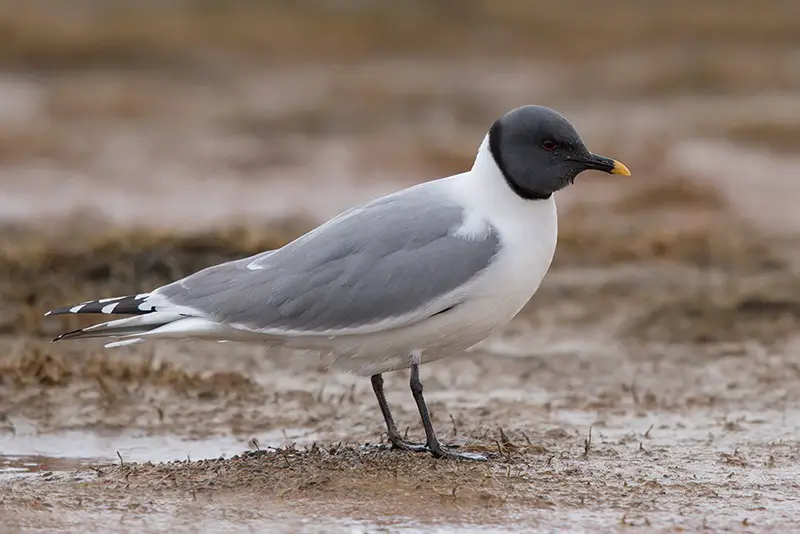
Sabine’s Gull is a small and elegant gull known for its distinctive wing pattern and long pointed wings. Adults are easily recognized by their black heads (in breeding plumage), pale gray backs, white undersides, and striking black-and-white triangular wing pattern in flight. They measure about 13–14 inches in length, making them one of the smallest gulls seen off the Pacific coast.
This pelagic species is typically seen offshore in California during migration, especially in the fall. It passes along the coast from August to October, occasionally visible from land during storms or from pelagic birding trips out of ports like Monterey and Half Moon Bay. It is rare to spot it inland or along the immediate shoreline.
Sabine’s Gull feeds on small fish, plankton, and insects captured at sea. It is often seen flying gracefully above the waves in search of prey. A fun fact: this gull breeds in the high Arctic and undertakes one of the longest migrations of any gull, wintering off the coasts of South America and Africa.
Ross’s Gull (Rhodostethia rosea)
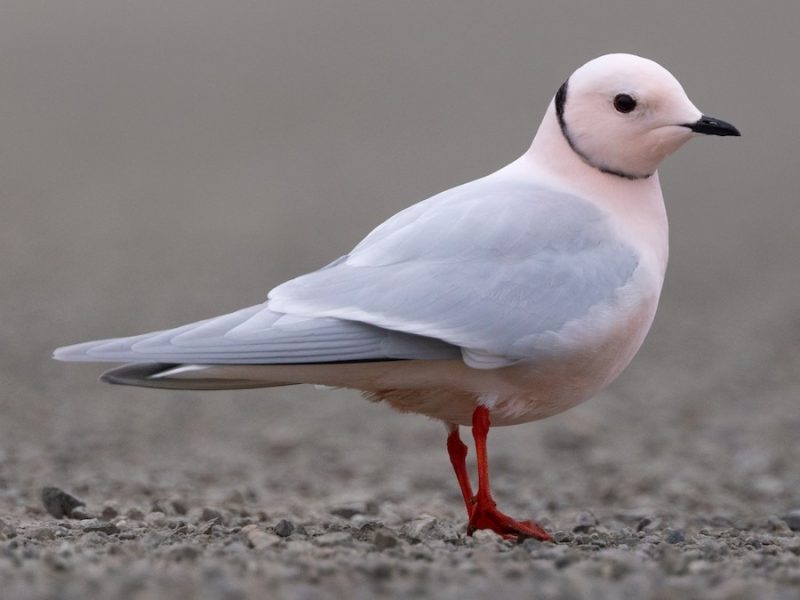
Ross’s Gull is a stunning and extremely rare gull, noted for its delicate appearance, soft pinkish underparts, and wedge-shaped tail. Adults in breeding plumage feature a black collar around the neck and pale gray upperparts. Its small size—around 11–13 inches long—and graceful flight style make it unlike any other gull found in North America.
In California, Ross’s Gull is an extremely rare vagrant from the Arctic, with only a few documented sightings in the state’s history. Most records have occurred in Northern California during late fall or early winter, typically at coastal locations or large inland lakes where birders gather in hopes of a rare encounter.
Its diet consists mainly of small fish and marine invertebrates, and in its native Arctic habitat, it often forages along ice edges. A fun fact: due to its rarity and beauty, Ross’s Gull is considered a “holy grail” bird among gull enthusiasts and often draws birders from across the country when one is spotted in California.
Hybrid Gulls in California
Due to overlapping ranges and interbreeding, hybrid gulls are not uncommon.
Western Gull × Glaucous-winged Gull (“Olympic Gull”)
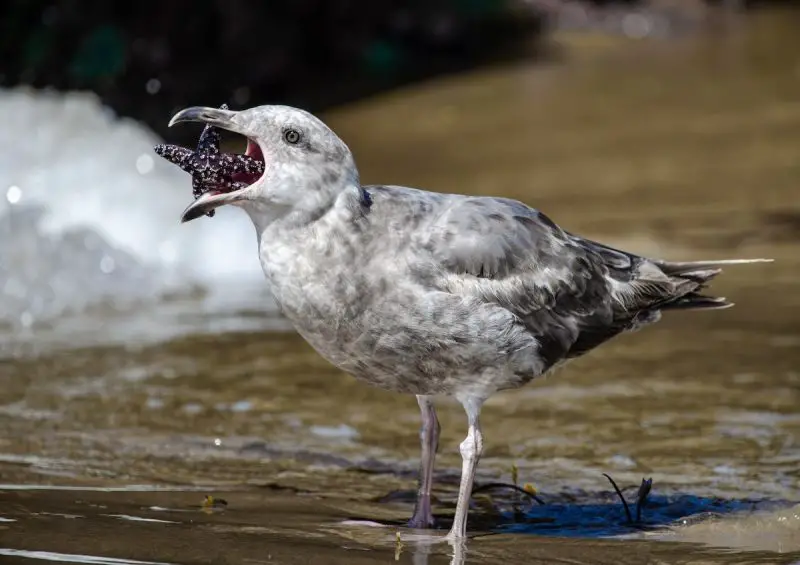
The “Olympic Gull” is a hybrid between the Western Gull and the Glaucous-winged Gull, exhibiting a blend of features from both parent species. Typically, it has a medium-gray back (darker than a Glaucous-winged but paler than a Western Gull), wingtips that are paler than pure Western Gulls, and a large, stout yellow bill with a red spot. Its overall structure is bulky and its size ranges from 23–26 inches.
This hybrid is quite common in Northern California, particularly around the San Francisco Bay Area and other coastal habitats. It thrives in urbanized marine environments where both parent species overlap and interbreed. Hybridization is most frequent during the winter and early spring, though some individuals remain year-round.
Olympic Gulls feed on fish, marine invertebrates, carrion, and refuse. They often forage in the same areas as their parent species and can be seen loafing in large gull flocks. A fun fact: the name “Olympic Gull” is derived from the Olympic Peninsula in Washington, where this hybrid is also common, but California offers excellent opportunities to observe them regularly.
Herring Gull × Glaucous-winged Gull
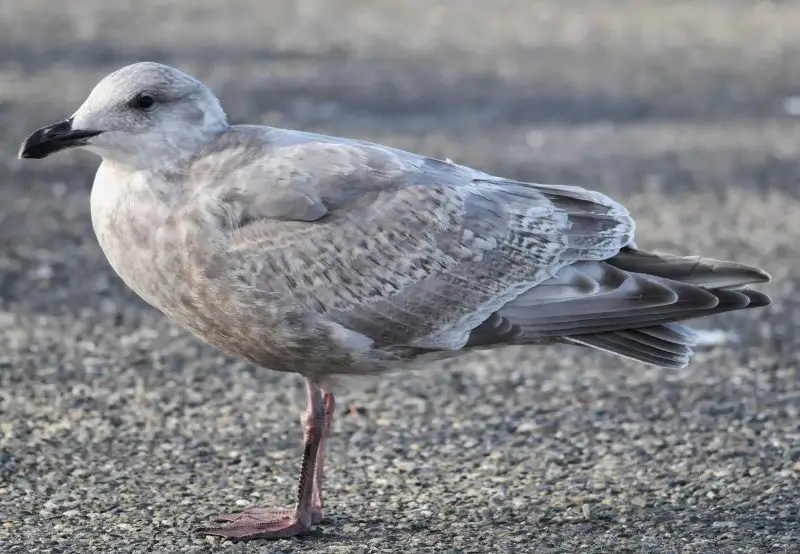
This hybrid between the Herring Gull and the Glaucous-winged Gull is much rarer than the Olympic Gull, with only occasional reports along the California coast. Individuals typically show intermediate characteristics, such as pale gray upperparts, a fairly large and powerful bill, pink legs, and wingtips that are darker than those of a Glaucous-winged Gull but not as black as a pure Herring Gull.
Sightings in California are mostly limited to winter months, with scattered records from places like Humboldt Bay, Bodega Bay, and the San Francisco coast. These hybrids are more commonly found in the Pacific Northwest, but vagrant individuals may drift south into California with gull flocks.
This hybrid likely feeds on similar food sources as its parent species, including fish, crabs, mussels, and waste from human activity. A fun fact: identifying this hybrid can be quite challenging, and birders often debate individual gulls’ ancestry due to the subtle and variable nature of hybrid traits, making it a rewarding challenge for experienced gull watchers.


